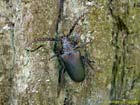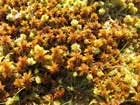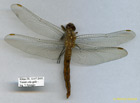Mire news In 2005 in the frame of the LIFE Project Implementation of Mire Habitat Management Plan for Latvia species and habitat inventories took place during the elaboration of management plans for the 4 project sites Cena Mire Nature Reserve, Stikli Mires Nature Reserve, Klani Mires Nature Reserve and Veseta Floodplain Mire Nature Reserve. In total 18 experts participated in this work. The field season in 2005 can be considered as a success - a number of new plant and animal species were discovered in the project sites.  | | Aegolius funereus | Mire news In 2005 in the frame of the LIFE Project Implementation of Mire Habitat Management Plan for Latvia species and habitat inventories took place during the elaboration of management plans for the 4 project sites Cena Mire Nature Reserve, Stikli Mires Nature Reserve, Klani Mires Nature Reserve and Veseta Floodplain Mire Nature Reserve. In total 18 experts participated in this work. The field season in 2005 can be considered as a success - a number of new plant and animal species were discovered in the project sites. Special values in the project sites Elaboration of the 4 management plans was coordinated by the project habitat expert Valda Baroniņa. The summarised information is quite impressive - each of the project sites has its own special values that distinguish it from the others. From the point of view of species diversity special is Klāņi Mires Nature Reserve with the total area of 1615 ha where 54 protected species of Latvia and 7 protected species of European importance, like Cypripedium calceolus, Lobelia dortmanna, Liparis loselii, Lycopodiella inundata, Eleocharis multicaulis, Rhynchospora fusca occur. Near Klāņi Lake the rich growths of Myrica gale appear as well. In total in Klāņi Mire Nature Reserve 10 protected habitats in Latvia and 9 of European importance (from them 4 are priority ones) are known that is a high number for this relatively small territory.  | | Prionus coriarius | Stikli Mires Nature Reserve is especially rich in invertebrate species - 23 protected species of Latvia and 3 protected species of European importance, like Lopinga achine and Coenonympha hero, Osmoderma eremita. From the point of view of the bird species, Stikli Mires Nature Reserve has a special value not only among the project sites but also in Latvia. Project ornithologist Aivars Petriņš considers that from the point of view of the diversity of bird species, Stikli Mires Nature Reserve is one of the 5 most outstanding territories in Latvia. In the site 30 protected species of Latvia and 26 species protected of Europe are known. It is due to the habitat diversity of the nature reserve where raised bogs border with forests and lakes. In the sites both species typical for forests and mires are known.  | | Sphagnum lindbergii | During the summer field work the project management plan expert Ilze Rēriha found again in Stikli Dizpurvs Mire from Stikli Mires Nature Reserve a very rare and protected Sphagnum species in Latvia Sphagnum lindbergii that has got its name thanks to botanist Lindberg who was the first to discover the species. In total in Latvia there are known 36 Sphagnum species and almost half of them are rare or very rare. As a botanically interesting site Veseta Floodplain Mire is known from the middle of the last century but a specially protected nature area was established there in 1999. The site has a special due to the presence of mineral rich springs and transition mires, as well as paludified forests. In total in Veseta Floodplain Mire Nature Reserve about 300 vascular plant and over 100 bryophyte species are known. The site is a habitat for 17 especially protected vascular plant species and 9 bryophyte species. Veseta Floodplain Mires is the habitat for the largest population of Saxifraga hirculus in Latvia. Also several protected orchid species, like Corallorhiza trifida, Gymnadenia conopsea, Dactylorhiza russowii | 
| | Gymnadenia conopsea | and Hammarbya paludosa are known there. Cena Mire is an area where more than 20 protected bird species feed and rest during migration. It is possible to observe Pluvialis apricaria, Tringa glareola, as well as great diversity of waterfowl. The raised bog habitats of Cena Mire are considered as one of the best nesting areas for cranes Grus grus with one of the largest nesting density of this species. In the mire regularly stay several tenths of not nesting cranes, but during the autumn migration here meet the migrating geese. In the natural part of Cena Mire Betula nana was discovered that is a protected plant species of Latvia. Cena Mire is one of the few raised bogs in Latvia that is the habitat for plant species characteristic for the mires of western Latvia - Trichophorum cespitosum and of eastern Latvia - Chamaedaphne calyculata growing in the same site. Cena Mire has a great diversity of bryophyte species. Here in addition to the typical raised bog Sphagnum species grows also Sphagnum pulchrum that is a very rare bryophyte species in Latvia. Cena Mire is located only in a half an hour drive from Riga but in the site the experts have found also the footprints of Canis lupus and Lynx lynx. In 2005 in Cena Mire Eptesicus nilssoni was discovered. In the mire habitats and near Skaists Lake also especially protected insect species were found, like Anax imperator, Leucorrhinia albifrons, Leucorrhinia pectoralis and Carabus nitens. 2005 year of the new insect species for Latvia  | | Orthetum brunneum | Dragonflies can be considered as a quite well studied insect group. In total there are known 58 species in Latvia. Still, the year 2005 in the Latvian entomology history will be a year of discovery of a new dragonfly species for Latvia. Near Klāņi Lake the entomologist Voldemārs Spuņģis discovered a new species now the 59th dragonfly of Latvia - Orthetum brunneum.
In Veseta Floodplain Mire Voldemārs Spuņģis found also two insect species of EU importance Lycaena dispar and Coenonympha hero. The forests of Veseta Floodplain Mire are the second known locality in Latvia of Prionus coriarius. Sea eagle in Stikli Mires In 2005 the project ornithologist Aivars Petriņš discovered again the largest eagle of Latvia Haliaeetus albicilla. The ornithologist stresses that the one aims of the protected nature areas has been fulfilled the bird species appreciate peace and silence that is maintained thanks to the | 
| | Haliaeetus albicilla | | in the nest | status of the protected nature area. Also as one of the surprises for this area can be considered the relatively high number of Aegolius funereus in Stikli Nature Reserve there are at least 10 pairs. There are few sites in Latvia with such a high density of this species. Aegolius funereus nests on trees in holes of Dryocopus martius. This is an excellent habitat for Aegolius funereus as tree cut is prohibited in this old-growth forest. Also 8 specimens of Glaucidium passerinum were heard in Stikli Mires Nature Reserve in 2005. In Cena Mire Aivars Petriņš has discovered the nest of Grus grus with a chicken hatching out from an egg. It is a rare and fantastic possibility to see it. New fungi species During the elaboration of the management plan the mycologist Inita Dāniele found a new protected fungi species growing in Cena Mire Suillus flavidus. It is a rare species in Europe is characteristic for the raised bogs. At present there are known only 4 localities in Latvia - both in the raised bogs and dune slacks. Inita Dāniele stresses that until now only few studies of the raised bog fungi were carried out. The 2005 was not favourable for the growth of fungi as the summer was hot and dry. In total over 60 mushroom species were discovered in Cena Mire but the total number could reach even 300 to 400 hundred. | 






